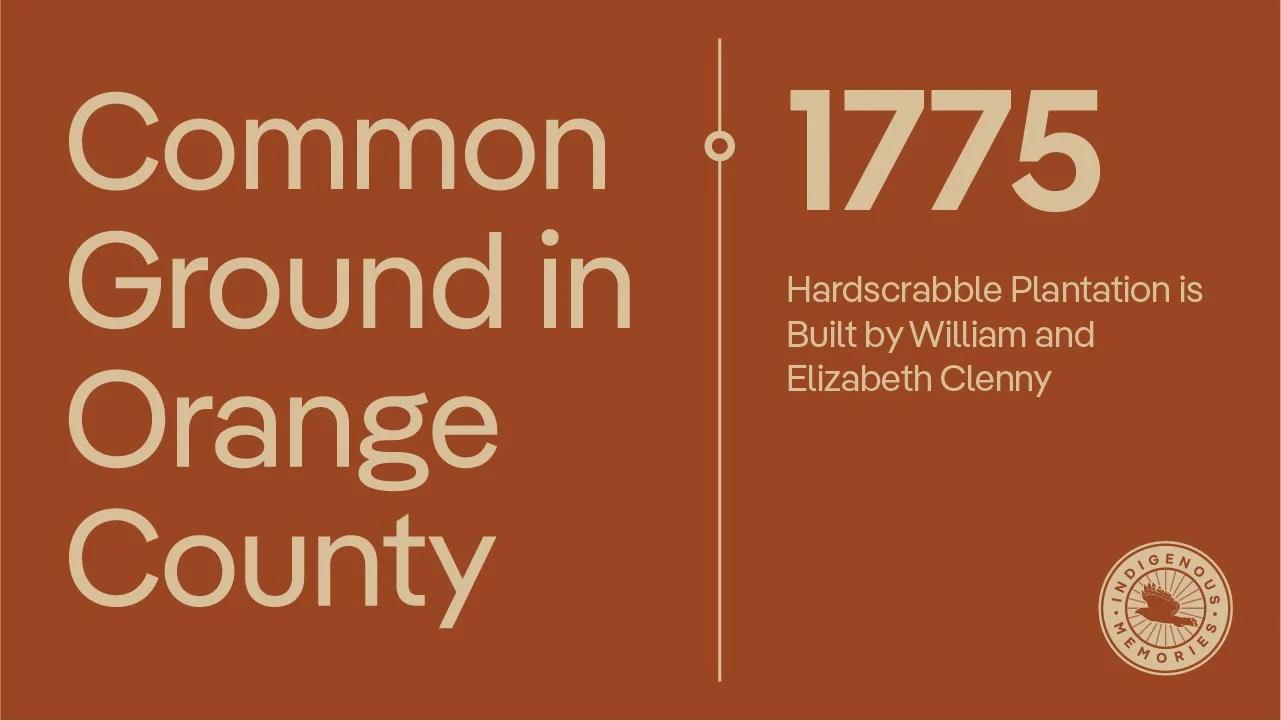
1775
HARDSCRABBLE PLANTATION IS BUILT
While the precise details are lost to history, Hardscrabble Plantation began when William and Elizabeth Clenny built an initial house on the land sometime before 1779.
The Clennys' house, one of the earliest European-built homes in the area, was likely a modest dwelling compared to what it would become as the center of the Pleasant Grove, later Hardscrabble Plantation. It is unknown how or when the Clennys acquired the property.
On March 20, 1779, the Clennys sold 227 acres and "all houses" to James and John Cain for £1,411. This substantial sum suggests that a "considerable house," as described in historical records, already existed on the property.
The Cains likely found the land attractive as it was on the “Indian Trading Path,” close to the then-seat of government and near the Little River. This transaction marked the beginning of the Cain family's long association with Hardscrabble, a connection that would profoundly impact the lives of countless enslaved people.
It is important to acknowledge that the Eno and Occaneechi people inhabited this area long before European colonization. The Clennys' house represented the encroachment of European settlers onto Indigenous land, a process that would have far-reaching consequences for the Indigenous people.
The story of the Clennys and the initial construction of Hardscrabble is a reminder that history is often built layer upon layer. They are but the first layer in the narrative of Hardscrabble, which would become far more complex and consequential with the arrival of the Cain family and the expansion of the plantation through enslaved labor.
Featuring Indigenous Memories Co-Founder, Beverly Scarlet


